| Weight | 1 lbs |
|---|---|
| Dimensions | 9 × 5 × 2 in |
| accession | P99731 |
| express system | E.coli |
| product tag | biotin at C-terminal |
| purity | > 97% by SDS PAGE |
| molecular weight | Predicted Molecular Mass: 11,218.9807 Da Extinction Coefficient: 14,180 M-1 cm-1 Actual Molecular Mass: 11,218.9807 Da by ESI Mass Spec |
| available size | 10 µg, 100 µg, 2 µg, 50 µg |
| endotoxin | <0.01 EU per 1μg of the protein by the LAL method |
Biotinylated Macrophage inflammatory protein-3-beta (MIP-3B/CCL19) 8022
Price range: $134.00 through $2,862.00
Summary
- Expression: E.coli
- Amino Acid Range: 22-98
Biotinylated Macrophage inflammatory protein-3-beta (MIP-3B/CCL19) 8022
| protein |
|---|
| Database link: human P99731 |
| Size and concentration 2, 10, 50, 100µg and lyophilized |
| Form Lyophilized |
| Storage Instructions Avoid repeated freeze-thaw cycles: • 12 months from date of receipt, -20 to -70 °C as supplied. • 1 month, 2 to 8 °C under sterile conditions after reconstitution. • 3 months, -20 to -70 °C under sterile conditions after reconstitution |
| Storage buffer ​Reconstitution: Spin sample prior to reconstitution. Recommended concentration of 100µg/mL in sterile water. Shipping: Room Temp |
| Purity > 97% by SDS PAGE and HPLC |
| target relevance |
|---|
| Macrophage inflammatory protein-3-beta (MIP3β) (CCL19), also known as EBI1 ligand chemokine (ELC), directs chemotaxis of dendritic cells, and certain B- and T- lymphocytes, but not monocytes or granulocytes. It is constituitively expressed in thymus and lymph nodes and binds specifically to target cells expressing the receptor CCR7. Being a homeostatic chemokine, its primary physiological role is considered to be in the normal recirculation and homing of lymphocyte. However, MIP-3β could also be proinflammatory, and is implicated in the post-HIV infection responses. |
| Protein names C-C motif chemokine 19 (Beta-chemokine exodus-3) (CK beta-11) (Epstein-Barr virus-induced molecule 1 ligand chemokine) (EBI1 ligand chemokine) (ELC) (Macrophage inflammatory protein 3 beta) (MIP-3-beta) (Small-inducible cytokine A19) |
| Gene names CCL19,CCL19 ELC MIP3B SCYA19 |
| Protein family Intercrine beta (chemokine CC) family |
| Mass 10993Da |
| Function FUNCTION: May play a role not only in inflammatory and immunological responses but also in normal lymphocyte recirculation and homing. May play an important role in trafficking of T-cells in thymus, and T-cell and B-cell migration to secondary lymphoid organs. Binds to chemokine receptor CCR7. Recombinant CCL19 shows potent chemotactic activity for T-cells and B-cells but not for granulocytes and monocytes. Binds to atypical chemokine receptor ACKR4 and mediates the recruitment of beta-arrestin (ARRB1/2) to ACKR4. {ECO:0000269|PubMed:9498785}. |
| Subellular location SUBCELLULAR LOCATION: Secreted. |
| Tissues TISSUE SPECIFICITY: Expressed at high levels in the lymph nodes, thymus and appendix. Intermediate levels seen in colon and trachea, while low levels found in spleen, small intestine, lung, kidney and stomach. |
| Structure SUBUNIT: Interacts with TNFAIP6 (via Link domain). {ECO:0000269|PubMed:27044744}. |
| Target Relevance information above includes information from UniProt accession: Q99731 |
| The UniProt Consortium |
Data
FAQ & Publications
| pmid | title | authors | citation |
|---|---|---|---|
| We haven't added any publications to our database yet. | |||
Protocols
| relevant to this product |
|---|
| Migration assay |
Documents
| # | ||
|---|---|---|
| Please enter your product and batch number here to retrieve product datasheet, SDS, and QC information. | ||
Only logged in customers who have purchased this product may leave a review.
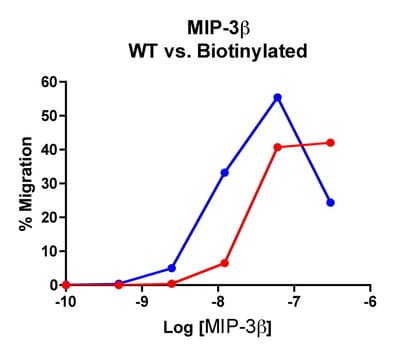
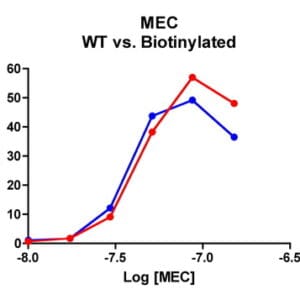
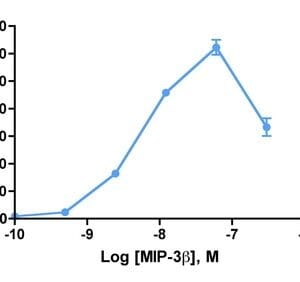
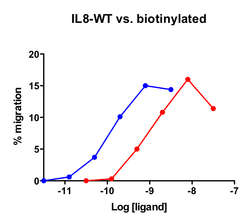

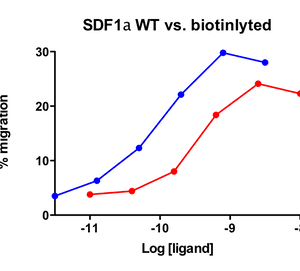
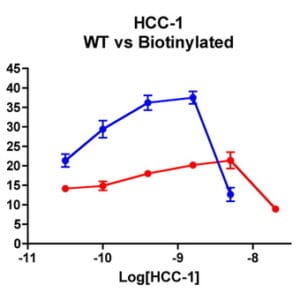
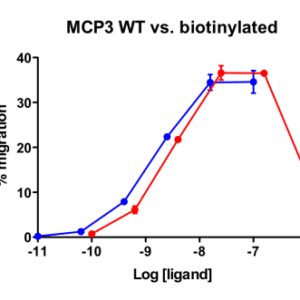
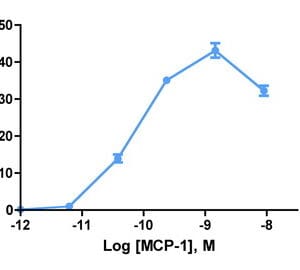
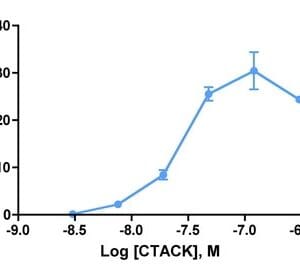
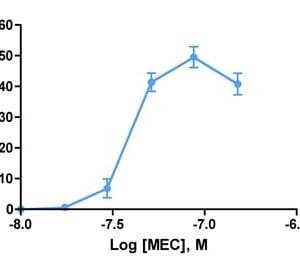

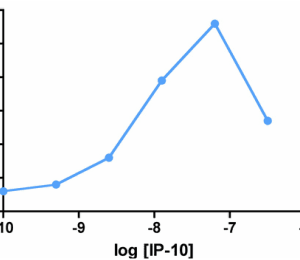
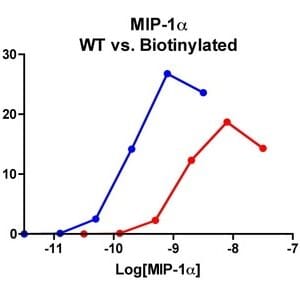
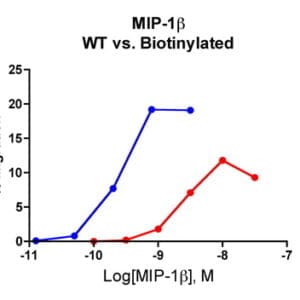

Reviews
There are no reviews yet.